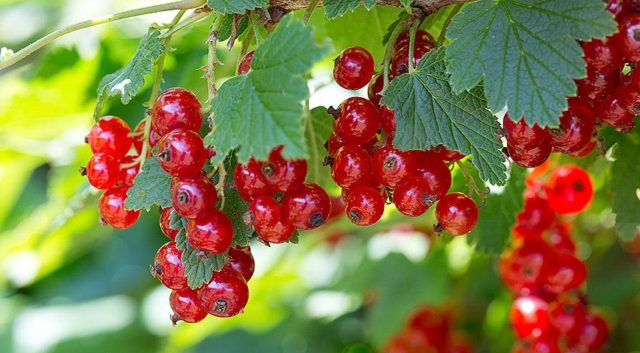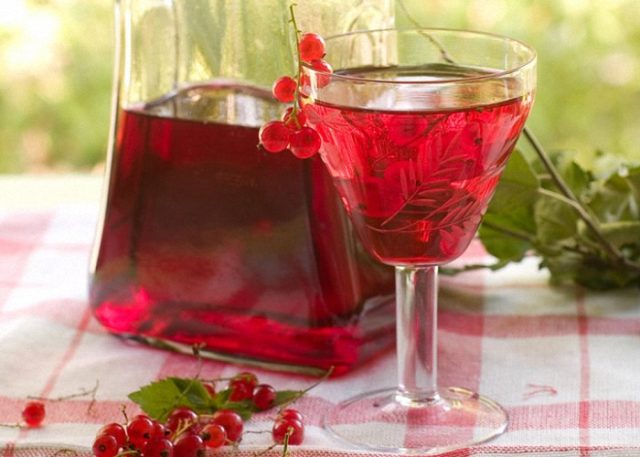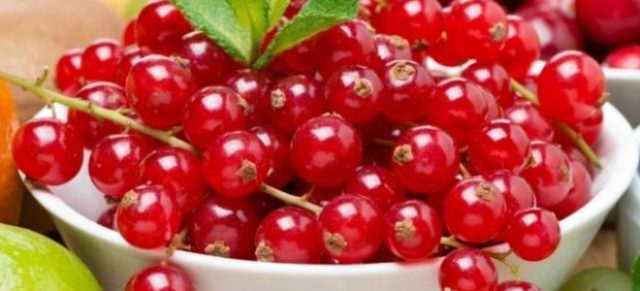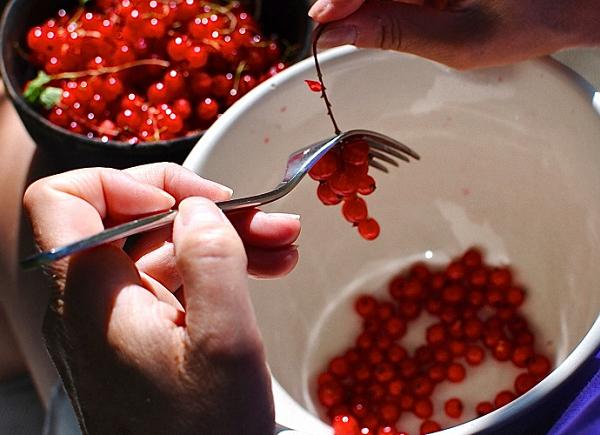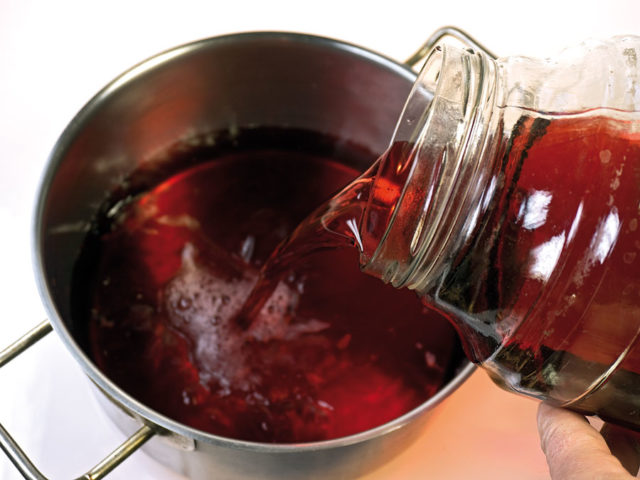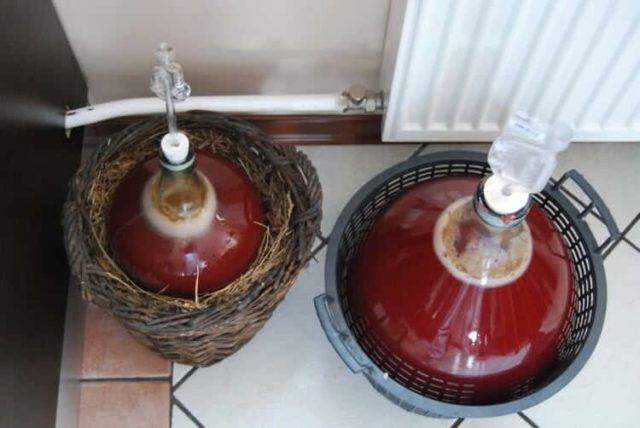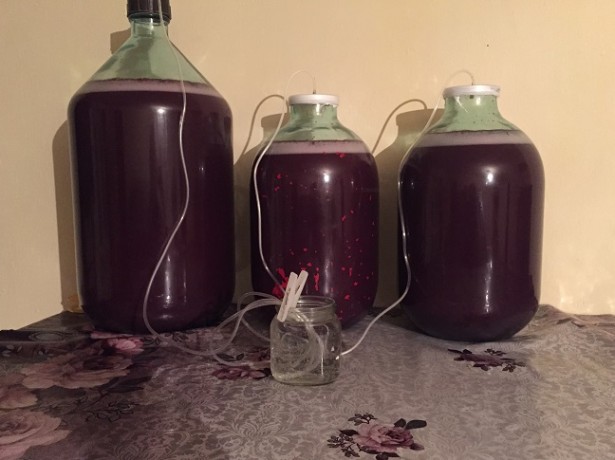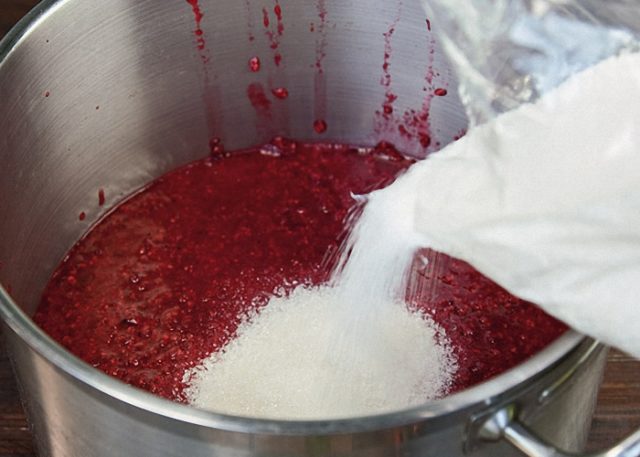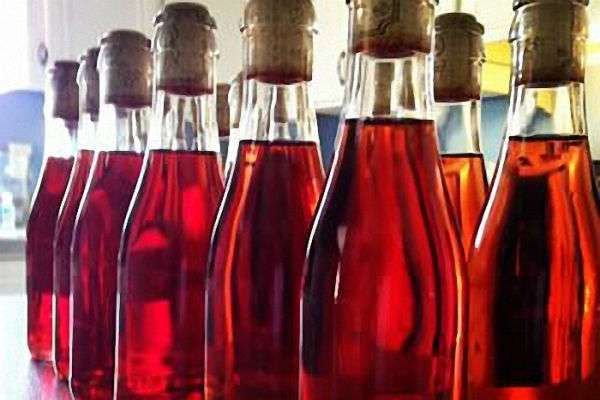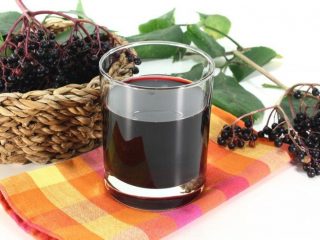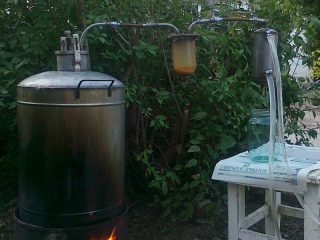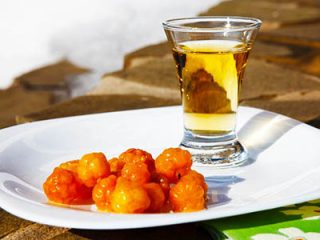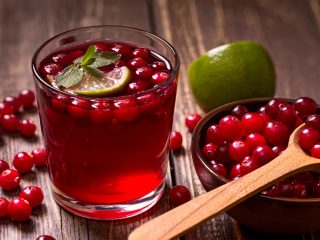Content
Summer has come and many people need recipes for red currant wine at home. From this sour berry you can prepare amazingly tasty and aromatic drinks, including alcoholic ones. Homemade red currant wine will delight you not only with its refined taste, but will also protect your health, of course, if taken in medicinal doses.
The benefits and harms of homemade redcurrant wine
The drink obtained by fermenting berry juices is called homemade wine. Made from red currants, it contains not only alcohol and sugar, but also many useful substances:
- organic acids, sugars;
- minerals (iron, potassium, selenium);
- vitamins (E, A, C);
- B-carotene;
- succinic, malic acid;
- pectin, nitrogen compounds.
Moderate consumption of the drink improves health and increases resistance to certain diseases.Red currant juice, from which wine is made, has a number of medicinal properties that are not lost as a result of its fermentation and transformation into wine. Here are just a few of them:
- restorative;
- antipyretic;
- anti-inflammatory;
- hematopoietic;
- appetite stimulant;
- laxative;
- diuretic;
- diaphoretic;
- choleretic.
Despite all the usefulness of red currant wine, it also has quite a few contraindications. It is contraindicated for ulcerative lesions of the gastrointestinal tract, gastritis, hepatitis and some other diseases associated with reduced blood clotting.
How to make redcurrant wine
To properly prepare redcurrant wine, you need to know some of the nuances and features of the technological process used to make homemade alcohol. It is best to use glass bottles, cylinders, oak barrels, enamel pans, and buckets. To separate the juice from the pulp, you can use various methods:
- using a press;
- use a juicer;
- through a sieve (colander) by hand.
The pulp obtained after the first spin is not thrown away. It can be reused. Pour in warm water (1:5), leave for several hours, squeeze and filter. The taste of wine depends on the ratio of acid and sugar in the fruit. Since red currants are a very sour berry, sugar is often used when making wine. The juice is diluted with water to reduce the concentration of acids in the drink. Sugar is also added at the same time.
It should be remembered that:
- The optimal sugar content in the wort is 25%;
- excess sweetness interferes with the fermentation process;
- 1 kg of granulated sugar dissolved in a drink gives an additional 0.6 liters;
- 20 g of sugar per 1 liter of wort increases the strength by 1 degree.
After sugar syrup is added to the wort, it is placed in a glass container or keg. The volume should be filled half or three quarters, no more. Otherwise, the pulp may burst out during strong fermentation. Then you need to add the starter (wine yeast):
- table wine – 20 g/1 l of wort;
- dessert – 30 g/l.
You can make your own wine yeast from raisins or grapes. To do this, you need to place 0.2 kg of ripe grapes (raisins), 60 g of sugar in a bottle, add water (boiled) to ¾ of the volume. Ferment for 3-4 days.
Sourdough can also be prepared from raspberries and strawberries. Mash two cups of berries, add 100 g of sugar, a cup of water and shake well. It will also be ready in 3-4 days. Bread and brewer's yeast should not be used. They significantly spoil the taste of the drink, and also begin to die when the strength reaches 13%.
To carry out the fermentation process, containers with wort are placed in a dark place where the temperature is kept no higher than +18 - 20 degrees. All bottles must be labeled with the date and a list of operations performed. To isolate the wort from air, a water seal is installed at the neck of the container. It is a tube that is connected at one end to the stopper of the bottle, and at the other end it is immersed in a jar of water.
There is an easier way to isolate the wort from contact with oxygen. This is a plastic bag or rubber glove placed over the neck of the bottle. To activate the fermentation process, you need to periodically shake the container with the wort so that the bacteria that have settled to the bottom are included in the work. The end of the fermentation process can be recognized by the clarity of the wine, sediment at the bottom of the bottle, and the absence of sweetness.
Homemade redcurrant wine recipes
Wine made from fresh berries, without artificial colors and flavors, is much more pleasant and healthier to drink than industrially produced alcoholic beverages. You need to master the technology in all its subtleties, then making wine at home will not be difficult.
A simple recipe for red currants at home (with yeast)
Sort the berries, wash and dry. Extract the juice from red currants using any available method. If you don’t have time to bother with preparing wild yeast, you can use store-bought ones.
Ingredients:
- juice (red currant) – 1 l;
- sugar – 1 kg;
- water – 2 l;
- wine yeast.
Mix the juice with sugar syrup, yeast and leave for a day. Then cover the container with liquid with a glove and shake periodically. Simple redcurrant wine will ferment better at +25 degrees. As soon as the process has stopped, remove it from the sediment (use a straw to pour it into another bottle) and ferment it at a temperature of +10 - 15 with a water seal.
Fortified red currant wine
Mash the washed and dried berries. Add sweet syrup to the resulting slurry. To prepare it for 1 liter of pulp you need:
- sugar – 120 g;
- water – 300 ml.
The result will be a sweet wort. Add wine yeast (3%) to it and leave in a warm room for several days (2-3). Stir the fermented wort several times every day with a wooden stick. Then separate the liquid from the pulp and add alcohol. For one liter – 300 ml of alcohol (70-80%). Place in a closed pan for 1-1.5 weeks.
During infusion, the wine should be clarified. To do this, add 1 tbsp per 1 liter of drink. l. milk. When the clarification process is completed, the wine is poured into another container, leaving sediment at the bottom. Then distributed into bottles.
Homemade redcurrant wine without yeast
There are many recipes for homemade redcurrant wine.
There are a number of mandatory conditions that must be met when picking berries. Firstly, the fruits must be ripe, and secondly, there should be no rain for some time, at least 2-3 days. That is, you cannot pick berries immediately after precipitation falls. Rain washes away from the surface of the berries the bacteria that are needed for making wine and fermenting it.
Then squeeze the juice from the currants using any method. This can be done using a press or manually. Place the berries in a colander and put a glove on your hand. Mash each berry well so that it releases its juice. Turn the berries into a pulp, which will then infuse and produce wine. This will be the wort. Add more water and place in a large container. There is no need to sort out the currants and remove the branches. Under no circumstances should it be washed.
Ingredients:
- red currants – 10 l (bucket);
- water – 5 l.
Below is a step-by-step recipe for red currant wine. Mix the resulting slurry with a wooden spatula. On the second day, all the berry pulp floats to the top. You need to infuse the wort for 5 days, stirring the berry mass several times a day. The fermentation process starts - those bacteria that were on the surface of the berries begin to work.
The next step is to squeeze out the pulp using gauze and discard. Pour the remaining liquid into a large bottle using a funnel. Close the container using a water seal. The fermentation process takes place and the gas released goes through the tube into the water.So the wine should stand for 21 days.
Another recipe involves using sugar. Wash the berries, sort out twigs and foreign impurities. Next, grind with a wooden pestle in a deep bowl until it becomes mushy.
Ingredients:
- red currant (juice) – 1 l;
- granulated sugar – 1 kg;
- water – 2 l.
Squeeze out the juice thoroughly. Pour it into a bottle. Add sugar, water, and stir well with a wooden spoon. Leave to ferment for a maximum of a month or 3 weeks. Then strain through a filter or thick cloth, pack into containers and close tightly.
You can make real homemade champagne from red currants. Fill the bottle halfway (maximum 2/3) with berries. Add water to the top and place in a cool place. Shake the contents of the bottle thoroughly several times a day.
Ingredients:
- rum – 50 g;
- champagne – 100 g;
- sugar – 200 g;
- raisins – 3 pcs.
After 1-1.5 weeks, filter the water infused with berries. Distribute it among champagne bottles. In addition, add the specified amount of ingredients to each individual bottle. Seal tightly and even preferably tar. Bury it in the sand, preferably in a cellar or other dark place. In a month you can conduct a tasting. If the wine does not start to sparkle, keep it for another 1-2 weeks.
To make another wine you will need 6 kg of currants. First you need to squeeze the juice out of the berries. Next you will need the following ingredients:
- sugar – 125 g/1 l of juice;
- cognac – 100 g/1.2 l of juice.
Dry the washed berries and mash them with a wooden masher. Place them in a cold place and wait for the fermentation process. When it is finished, strain the berry mass through a sieve, trying to avoid contact with it with your hands. Set aside the resulting juice, pour it into a bottle (barrel), add sugar and cognac.Store in the cellar for up to 2 months, then bottle. And leave for another 3-4 months until fully cooked.
Wine made from red currants, rowan berries and grapes
From grapes, which have the most wild yeast on their surface, it is best to prepare a starter for wine fermentation. It is important not to wash them so as not to lose such a useful feature. First, crush the berries with a wooden masher, then transfer them to a jar and add boiled water and granulated sugar. Stir well and leave to ferment, which will last 3-4 days. Then strain and store in the refrigerator for a maximum of 1.5 weeks. Only put it into the wort while it is warm.
Ingredients:
- grapes – 0.6 kg;
- sugar – 0.25 kg;
- water – 0.1 l.
Next, get juice from assorted berries (currants, rowan). Dilute it with water in a 1:1 ratio. For example, for 5 liters of juice - the same amount of water. The result will be 10 liters of wort. Add starter - 30 g/1 l of wort. This means that for 10 liters you need 300 g. Add sugar in stages:
- 1st day – 420 g/10 l of wort;
- 5th day - the same;
- 10th day - the same.
Put a rubber glove on the neck of the jar (bottle) and watch it. After a few days it will swell, which means the fermentation process has begun. Then poke a hole with a needle - this will allow the accumulated gases to escape out. In this case, oxygen from the environment will not be able to penetrate into the can.
After fermentation is complete (the glove will wilt), use a tube to pour the purified wine into another container without disturbing the sediment. If the drink is still not pure enough, filter it through a cloth or special paper. Pour into bottles and keep in the refrigerator. You can use it after 2 months.
Redcurrant wine with raspberry sourdough
After grapes, raspberries are the leader in terms of the amount of wine yeast contained on the surface of the fruit. Therefore, starter culture for making homemade wines is often prepared on its basis. You will need:
- raspberries - 1 tbsp.;
- water ½ cup;
- sugar – ½ tbsp.
Pour sweet syrup over the berries and leave to ferment in a very warm place for three days. They cannot be washed. Next you need to take the following ingredients:
- currants (red) – 3 kg;
- rowan (chokeberry) - 3 kg;
- sugar – 2.5 kg;
- water – 5 l.
Pour the ground berries with warm syrup and place in a warm room. Put on a medical glove on top. Don't forget to shake to prevent mold from forming on the surface.
Then strain through a plastic sieve with several layers of gauze, separating the pulp. Now leave the wort for fermentation, closing the neck with a water seal. It will ferment for approximately 1.5 months.
Terms and conditions of storage
The bottle of wine should be placed so that the cork is immersed in its contents. This way it will not dry out and will not allow air to penetrate inside. A minimum volume of voids should remain inside the bottle, this significantly reduces the possibility of oxidation. It is better to store wine in the cellar, where the temperature is relatively stable, about +8 degrees. The room itself must be dry and clean.
Conclusion
There are a variety of recipes for red currant wine at home. You need to choose the proportions and cooking methods that best suit the tastes of all family members.
